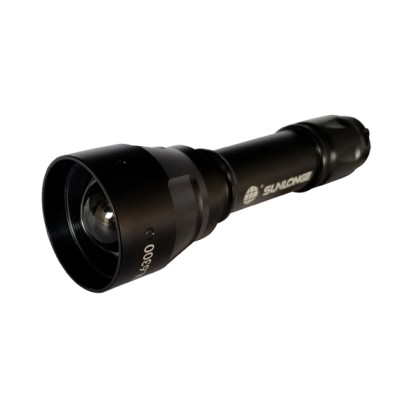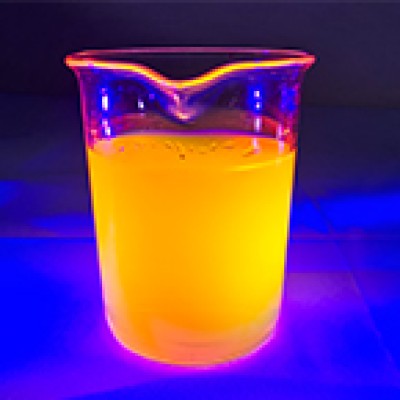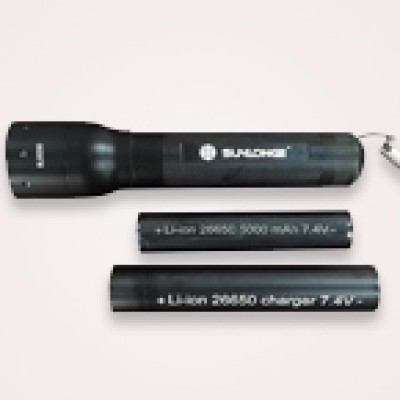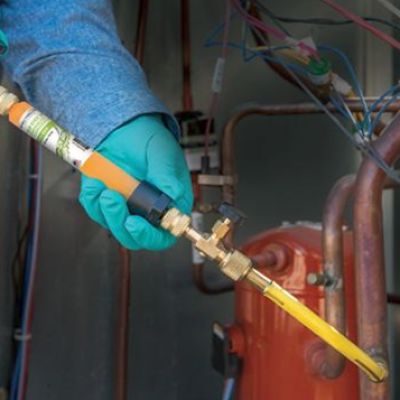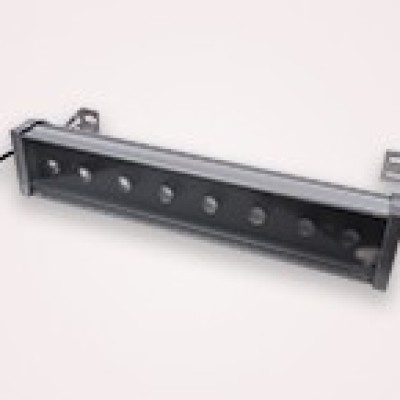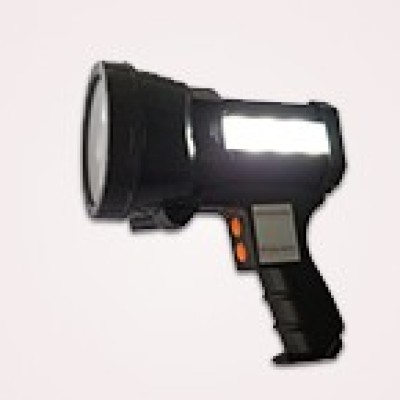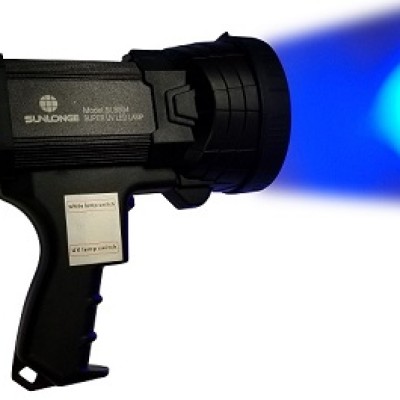
In an increasingly eco-conscious world, industries are continuously seeking solutions to minimize their environmental footprint and improve sustainability. One powerful tool that is playing a crucial role in this effort is the UV leak detection flashlight. These innovative flashlights are instrumental in detecting leaks, particularly refrigerant leaks, which are a significant concern in various industrial and residential applications. By providing an efficient and eco-friendly solution for identifying leaks, UV leak detection flashlights help reduce refrigerant waste, minimize environmental impact, and promote sustainability.
In this article, we will explore how UV leak detection flashlights contribute to environmental protection, particularly in the context of HVAC systems, refrigeration, and other industries. We will also discuss how these tools work, their benefits, and why they are an essential part of sustainable practices in both industrial and home applications.
What is a UV Leak Detection Flashlight?
A UV leak detection flashlight is a specialized flashlight that emits ultraviolet (UV) light to help detect leaks in systems that contain UV-reactive substances. Typically, refrigerants are used in HVAC systems, refrigeration units, and automotive air conditioning systems. These systems often contain small amounts of leak detection dyes that fluoresce under UV light, making it easy to spot potential leaks when the UV flashlight is used.
UV leak detection flashlights are a highly effective tool in detecting refrigerant leaks, as they can detect even the smallest leaks that are not visible to the naked eye. The technology works by illuminating the leak area with UV light, which causes the dye inside the system to glow, thus highlighting the location of the leak.
How Do UV Leak Detection Flashlights Contribute to Reducing Environmental Impact?
- Reducing Refrigerant Leaks
Refrigerants such as CFCs (chlorofluorocarbons) and HFCs (hydrofluorocarbons) are commonly used in refrigeration and air conditioning systems. However, when these chemicals leak into the atmosphere, they can contribute to global warming and damage the ozone layer. As a result, refrigerant leaks pose a significant environmental threat.
Using a UV leak detection flashlight can help identify and fix these leaks quickly, minimizing the amount of refrigerant lost into the environment. By detecting leaks early, you can ensure that HVAC and refrigeration systems operate at peak efficiency, avoiding the unnecessary release of harmful chemicals.
| Benefit | Environmental Impact |
| Early Leak Detection | Helps identify refrigerant leaks before they become significant, reducing the amount of harmful chemicals released into the environment. |
| Minimized Chemical Waste | Prevents the unnecessary waste of valuable refrigerants and chemicals, promoting sustainability. |
| Improved Efficiency | Ensures HVAC and refrigeration systems are running efficiently, reducing energy consumption and environmental impact. |
- Promoting Sustainability in Industry
In industrial settings, the use of UV leak detection flashlights is an effective way to maintain systems that require precision, such as refrigeration units, HVAC systems, and even certain manufacturing processes. By ensuring these systems are sealed and functioning correctly, the need for excessive refrigerant usage is minimized. Additionally, these flashlights help detect leaks in various systems that use chemicals or gases, enabling industries to reduce chemical waste and improve sustainability.
In industries such as automotive and commercial refrigeration, early detection of leaks can drastically lower the environmental burden. Instead of letting toxic or harmful gases escape into the air, technicians can identify and fix leaks quickly, which leads to reduced environmental contamination and improved air quality.
- Reducing Operational Costs and Waste
While the primary benefit of UV leak detection flashlights is environmental, they also offer significant economic advantages. By quickly identifying and addressing refrigerant leaks, businesses can save money on costly refrigerant refills and repairs. The longer a leak goes undetected, the greater the loss of refrigerant, resulting in higher operational costs. Early detection allows companies to fix issues before they escalate, reducing waste and ensuring that their systems are running efficiently.
This not only saves on costs but also improves the longevity of HVAC and refrigeration systems. A well-maintained system is more energy-efficient, leading to reduced electricity consumption and lower carbon emissions.
| Cost Saving | Environmental Impact |
| Prevents Refrigerant Loss | By detecting and fixing leaks early, refrigerant loss is minimized, reducing waste and harmful emissions. |
| Enhances System Longevity | Regular maintenance and leak detection extend the lifespan of equipment, preventing premature disposal and reducing waste. |
| Improved Energy Efficiency | Efficient systems consume less energy, decreasing the carbon footprint of operations. |
Applications of UV Leak Detection Flashlights
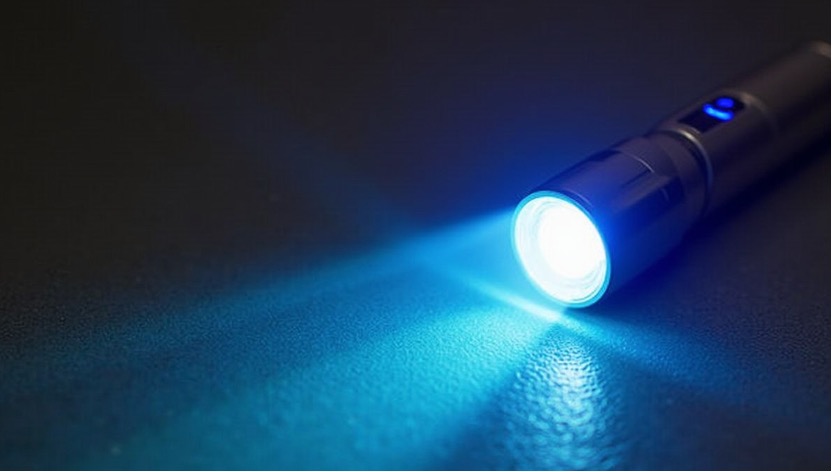
UV leak detection flashlights are versatile tools used across various industries. Below are some common applications where these flashlights are essential for improving sustainability and minimizing environmental impact:
- HVAC Systems
In the HVAC industry, detecting refrigerant leaks is crucial to maintaining system efficiency and ensuring environmental responsibility. A UV leak detection flashlight helps technicians locate small leaks in refrigeration lines, air conditioning units, and other HVAC components. By ensuring that the refrigerant is fully contained, these systems can operate efficiently, reducing energy consumption and lowering greenhouse gas emissions.
- Automotive Industry
In the automotive sector, air conditioning systems in vehicles often use refrigerants that can leak over time. Detecting these leaks early with a UV leak detection flashlight helps automotive technicians repair the system before it requires a full refrigerant recharge, which is more expensive and environmentally damaging.
- Commercial Refrigeration
Supermarkets, warehouses, and food storage facilities rely heavily on refrigeration to preserve food. UV leak detection flashlights are commonly used to detect leaks in these commercial refrigeration systems, ensuring that refrigerants are not lost and that energy use is kept to a minimum.
- Industrial Manufacturing
In manufacturing settings that require the use of gases or chemicals, UV leak detection flashlights are used to find leaks in equipment, pipelines, and containers. By preventing the escape of harmful substances, businesses can minimize waste and improve safety while ensuring environmental protection.
Q&A: Common Questions About UV Leak Detection Flashlights
Q1: How do UV leak detection flashlights work?
UV leak detection flashlights emit ultraviolet light, which causes specially designed refrigerant dyes to fluoresce. This fluorescence highlights the location of leaks, making it easier to identify and address issues that would otherwise go unnoticed.
Q2: What types of leaks can be detected with a UV flashlight?
UV leak detection flashlights are primarily used for detecting refrigerant leaks in HVAC and refrigeration systems, but they can also detect leaks in automotive air conditioning systems and other industrial applications that use chemical or gas systems.
Q3: Can UV leak detection flashlights be used by anyone?
While UV leak detection flashlights are easy to use, it is recommended that professionals or technicians perform the leak detection to ensure that the leak is accurately located and repaired. For commercial applications, using a trained technician is best to ensure the integrity of the system.
Q4: Are UV leak detection flashlights environmentally friendly?
Yes, UV leak detection flashlights help reduce environmental impact by preventing refrigerant leaks, which contribute to global warming. By detecting and fixing leaks early, these flashlights help minimize the release of harmful gases into the atmosphere.
Q5: How often should UV leak detection be performed on HVAC systems?
UV leak detection should be performed at least once a year as part of regular maintenance for HVAC systems. However, if you suspect a refrigerant leak, it’s essential to perform the inspection immediately to prevent any further waste or damage.
Conclusion
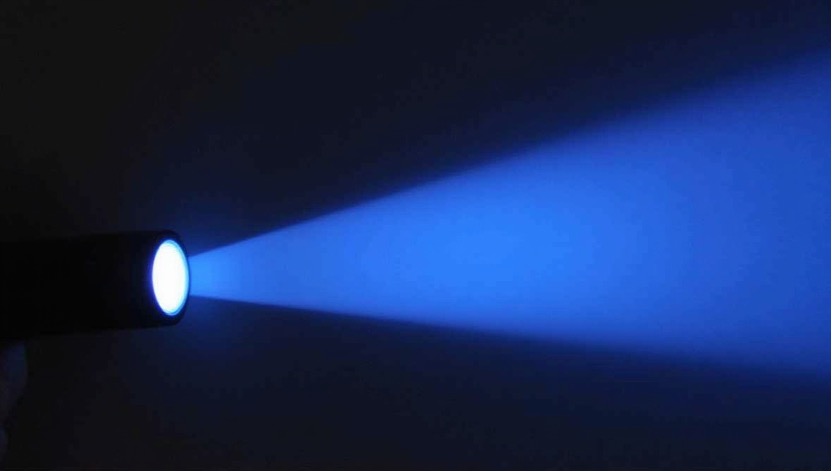
UV leak detection flashlights play a crucial role in reducing environmental impact by identifying and fixing refrigerant leaks before they escalate. These flashlights help businesses and homeowners improve the efficiency of their HVAC and refrigeration systems, saving energy, reducing waste, and preventing harmful chemicals from being released into the atmosphere.
At Sunlonge, we offer high-quality UV leak detection flashlights that are designed to meet the needs of both residential and industrial applications. By investing in a UV leak detection flashlight, you are not only ensuring your systems operate efficiently but also contributing to a more sustainable and environmentally responsible future.
For more information on our products or to inquire about a UV leak detection flashlight, visit Sunlonge or contact us today!
 CN
CN

